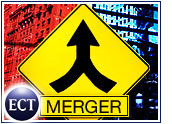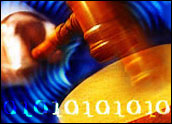
The HP-Compaq union not only was the largest merger in technology industry history, it also signaled the end of an era and the beginning of the next chapter in enterprise computing, according to a new report by the Yankee Group.
And the HP product lineup has already started to evolve since the deal closed May 7th. But what does the merger mean for corporate IT departments over the long term?
“For enterprise customers, now is the time to assess the impact the merged company will have on IT strategies,” Yankee Group senior analyst and report author Jamie Gruener said.
The Big Three
For starters, market positions already have shifted in key areas. IBM dominated the full-service computing space before the merger, Dell made its living by focusing on doing a few things well, and several smaller players competed for scraps.
But the new HP eventually could give Big Blue fits as it gains strength from consolidation efforts. Accordingly, many in the analyst community have rallied behind the merger decision.
“In some sense, we now have a Big Three in computing,” Forrester Research analyst Carl Howe told the E-Commerce Times.
A Formidable Business
Indeed, HP’s new combined server and storage product lines will give the company a significant boost in terms of the breadth of products and technologies that it needs to compete, according to the Yankee Group report.
As a result, the company should perform well against infrastructure suppliers like IBM and Sun Microsystems, according to Gruener, as well as against server and storage leaders like Dell and EMC.
“One of the places where HP has clearly become number one is in storage,” Howe said. “Compaq was already very strong, but you combine that with HP’s storage business and it’s pretty formidable.”
With that in mind, analysts said enterprises should focus on longer-term server and storage relationships that have been built up over the last decade.
Ongoing Support
But for all the benefits of the merger, there are also some potential drawbacks for customers. For example, the merger raises a number of questions about the fate of product lines, the blending of two very different corporate cultures, and the long-term vision HP needs to articulate with respect to fitting its products and technologies into a single, cohesive brand and vision, according to the Yankee Group report.
“The Yankee Group suggests that customers must evaluate the merger based on technology road maps, support commitment of products that will be phased out, and how enterprises can leverage the new, combined company for IT value,” Gruener said.
Howe noted that HP has done a good job so far. “I give HP credit for not slashing and burning [its phased-out product lines],” he said. “The company is making it as painless as possible for customers. That’s a good story.”
Net Result
Assuming that the merged company can overcome the “can we execute” issues, its future looks bright. But at least a year or two will likely elapse before the market pats HP executives on the back for a corporate integration job well done.
“The net result of the merger is that there is more choice for HP customers,” said Howe, “and more people are likely to become HP customers because of the sheer breadth of their offerings.”
HP executives could not immediately be reached for comment.












































The merger has been seamless – at least to the outside world – and there appears to be renewed purpose/vigor in the efforts to retain customers. It is good to see the company(s) move ahead and in a positive direction.